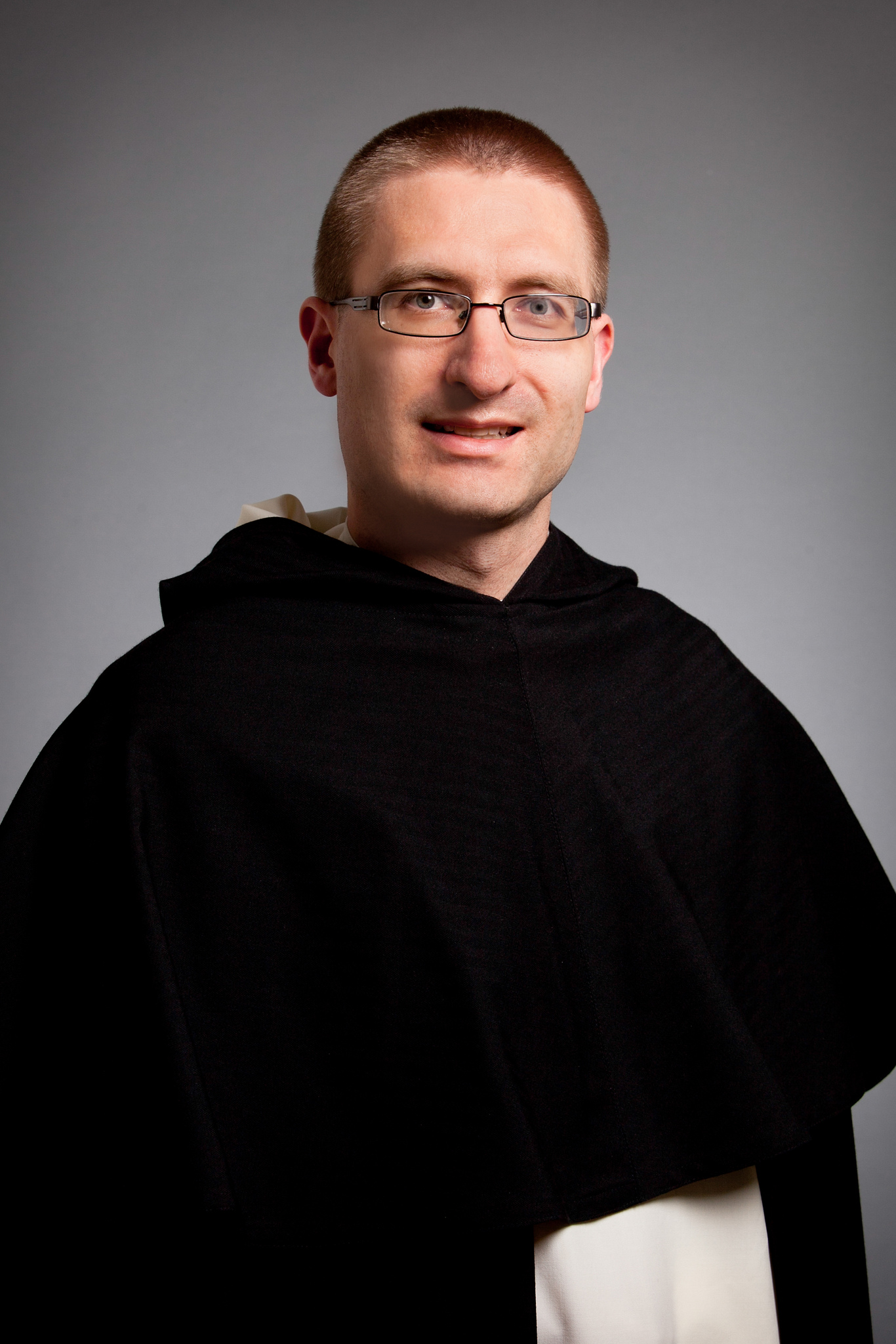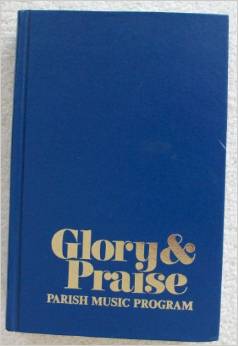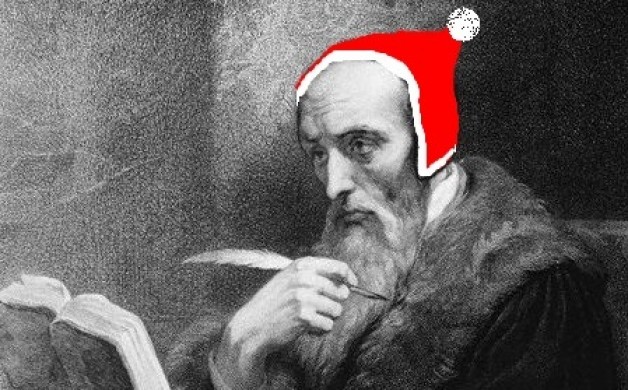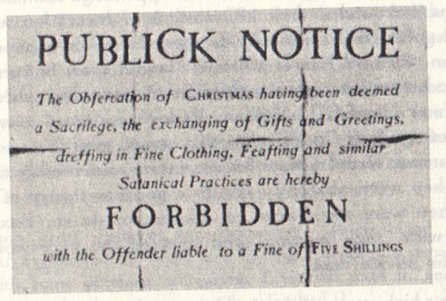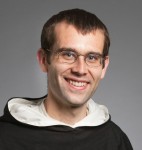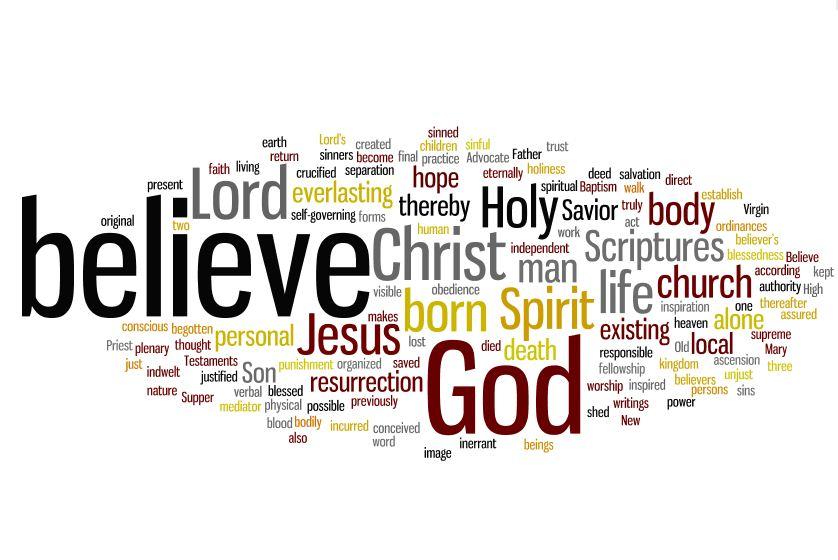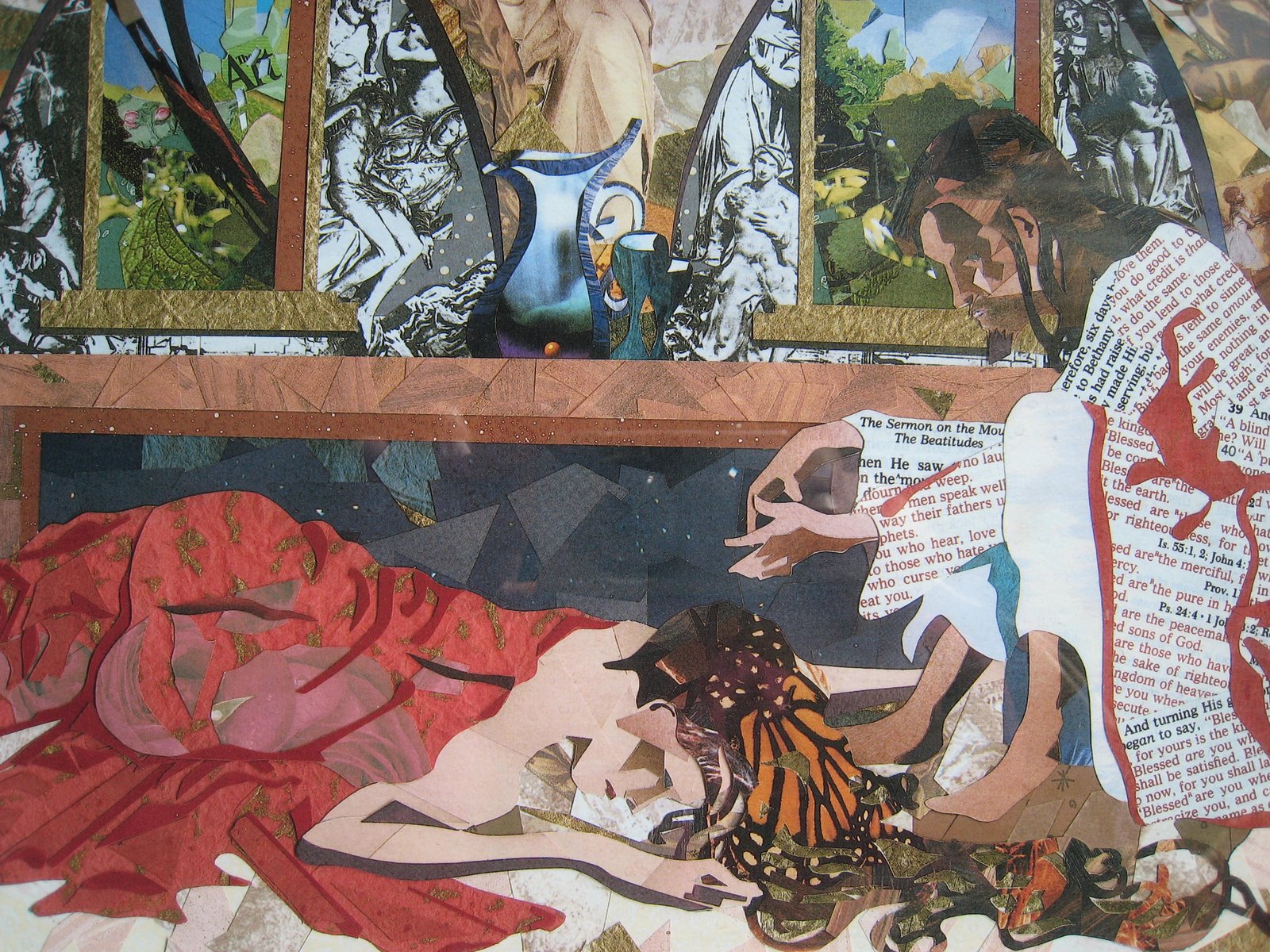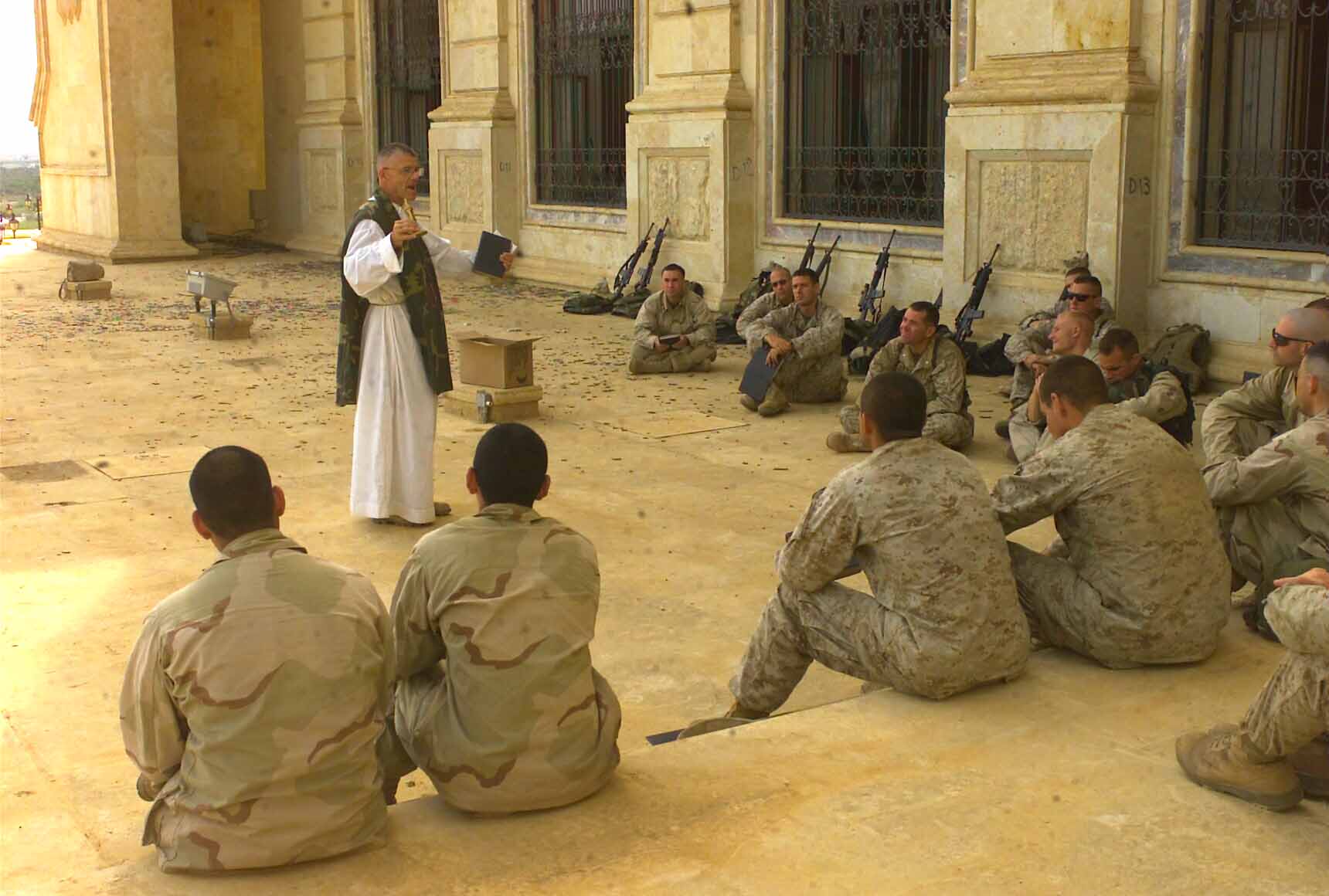
-by Sr Mary of the Compassion, OP, “The Dominican Saints gathered around the Crucified Christ”, ~195x, St Dominic de Guzmán and St Catherine of Siena kneel before the Lord; next to them, is St Martín de Porres in an attitude of adoration and gratitude. The painting is in the Dominican House of Studies, in Washington, DC.
Bottom Row 1 left to right:
† Saint Rose of Lima (1586–1617)
† Fra Angelico (now Blessed John of Fiesole) (1386–1455)
† Saint John of Gorkum (?–1572)
† Saint Catherine of Siena (1347–1380)
† Holy Father Dominic (1170–1221)
† Saint Catherine de Ricci (1522–1589)
† Saint Martin de Porres (1579–1639)
† Sister Maria (Mystic living at the Monastery with the artist)
† Saint Louis Bertrand (1526–1581) Top Row 2, left to right:
† Saint Raymond of Peñafort (1175–1275)
† Saint Antoninus of Florence, Bishop (1389–1459)
† Saint Margaret of Hungary (1242–1271)
† Saint Vincent Ferrer (1350–1419)
† Saint Albert the Great, Bishop (1207–1280)
† Saint Thomas Aquinas (1225–1274)
† Blessed Raymond of Capua (1330–1399)
† Alan de la Roche (1428–1479)
† Saint Peter Martyr (1206–1252)
† Saint Pius V, Pope (1504–1572)
† Saint Hyacinth (1185–1257)
† Blessed Lucy of Narni (1476–1544)
† Saint Agnes of Montepulciano (1268–1317)
† Two unknown brothers
Translation of the text at the bottom: Stanza 6 of Saint Thomas Aquinas’ Eucharistic hymn Adoro te Devote:
Pie Pelicane, Jesu Domine,
Me immundum munda tuo Sanguine :
Cujus una stilla salvum facere
Totum mundum quit ab omni scelere.
Lord Jesus, Good Pelican,
wash my filthiness and clean me with Your Blood,
One drop of which can free
the entire world of all its sins.
Constance María Rowe, Sister María de la Compaión, OP (1908-1977), was a Dominican religious who stood out for her artistic brilliance. Born in London in 1908, she was the daughter of an artist from the London Music-Hall. Friendly and talented, she soon showed herself as a young promise of art, especially in the field of painting. She studied at the Clapham School of Art and at age 19 she has the opportunity to enter the Royal College of Art in London, which provided her with complete training with professors of excellent reputation. At 24, as a climax to her studies at the British School in Rome, and having just started her artistic career, she obtained an important success by winning the prestigious Rome Prize for wall painting. A year earlier, in 1931, he had taken the instructions of the Catholic faith in the Brompton Oratory; becoming, at the end of that same year, a Tertiary (Third Order) Dominican. In 1937 she traveled to the United States to enter the Community of the Dominican Sisters of the Perpetual Rosary (also known as the Sisters of the Blue Chapel, Union City, New Jersey), she took her religious vows/profession in 1938. This close community has been very respected and loved by the surrounding neighborhood since its establishment more than a century ago.
Sister Mary was known primarily for her religious paintings – including the representation of some saints, fundamental passages of the gospels such as the nativity or crucifixion of the Lord, and prints with religious motifs. He also created works in a wide artistic repertoire: the design and elaboration of printed prints, silver and gold jewels – for this she learned artistic blacksmithing, mosaic altarpieces, confection of embroidered panels, and even accepted the creation of costumes and decorations of an opera for the Department of Hunter College Music, New York, in the 1950s. She also illustrated several books; and in a timely manner she designed an agenda of notes, published in 1948 with great success, with illustrations that made known her thoughts on how art should be approached and her practical approach to religious life.
One of her most important works is a painting depicting the crucifixion of Jesus Christ accompanied by the best known saints of the Order of Preachers, as above. Some of her works, both religious and secular, have served on various occasions for the economic support of the Blue Chapel monastery. Sister Mary of Compassion Rowe, OP, died on December 6, 1977 at the age of 69. Please click on the image for greater clarity
Crux mihi certa salus – The Cross is my sure salvation.
Crux est quam semper adoro – The Cross I ever adore.
Crux Domini mecum – The Cross of the Lord is with me.
Crux mihi refugium – The Cross is my refuge.
–Prayer of St Thomas Aquinas
Given the brutality we have witnessed of late on the news, I turned off the sound so Mara wouldn’t hear. Her reading is not to a discomforting level yet for her parents. I can’t help but feel human suffering is more palpable now, than perhaps I have felt before? We NEED to pray! I NEED to pray! It gets me through the day. It really does. Lord, keep us ever mindful of Your Passion. Ever Mindful.
Today the Dominican Order celebrates the feast of St. Catherine de Ricci. She’s known for her mysticism and her devotion, as found in her Canticum de Passione Domini. The studentate has translated and recorded the chant for you.
Watch the video above, sung by the student brothers in Ireland, of the canticle of the Passion of Our Lord. It was revealed to Catherine immediately after her first great ecstasy of the Passion. Our Lady desired Catherine to spread it as a form of prayer and contemplation for the salvation of souls. Below is the text from the canticle which is traditionally chanted by Dominicans on Good Friday.
My friends and loved ones
draw near to me and stand aloof
I am shut up and I cannot come forth
mine eye mourneth by reason of affliction
and my sweat became
like drops of blood falling down on the ground
For dogs have compassed me
the assembly of the wicked have enclosed me
I gave my back to the smiters
and my cheeks to them that plucked off the hair
I hid not my face from shame
and from those who spit on me
I am feeble and sore broken
I have roared by reason of the disquietness of my heart
The soldiers platted a crown of thorns
and put it on my head
They pierced my hands and my feet
I may tell all my bones
They gave me poison to eat
and in my thirst they gave me vinegar to drink
All they that see me laugh me to scorn
they shoot out the lip, they shake the head
They look and stare upon me
they part my garments among them, and cast lots upon my vesture
into your hands I command my spirit
redeem me, Lord, God of truth.
Remember your servant, O Lord.
when you come into your kingdom
Jesus cried with a loud voice
yielded up the ghost
The Mercy of the Lord
I will sing for ever
Surely he hath borne our griefs
and carried our sorrows
He was wounded for our transgressions
he was bruised for our iniquities
All we like sheep gave gone astray
we have turned every one to his own way
And the Lord hath laid on him
the iniquities of us all
Awake, why do you sleep, O Lord?
arise, and do not cast us off for ever
Awake, why do you sleep, O Lord?
arise, and do not cast us off for ever
Behold, God is my Savior
I will trust, and not be afraid
We ask you, come to help your servants
whom you have redeemed by your perilous blood.
V. Have mercy on us, O benign Jesus. R. Who in Thy clemency didst suffer for us.
Look down, we beseech Thee, O Lord, on this Thy family for which Our Lord Jesus Christ did not hesitate to be delivered into the hands of the wicked, and suffer the torments of the Cross. Amen.
The Canticum de Passione Domini consists of two-line verses from Scripture, both from the Old and New Testaments, which a solo cantor chants in Gregorian mode II (2) while kneeling before the crucifix. The solemn, sorrowful melody pulses like the heavy breathing of the dying Christ, and the silence between verses hangs with the gravity of Calvary. The span of time that passes between the verses communicates the reality that God inspired the words of David, always knowing that Christ’s crucifixion would fulfill them. As God was granting the Israelites their kingdom and building the temple, He was also announcing that He, the true King and Temple, would be torn down.
Yet, Christians know that what was torn down was rebuilt in three days. Friday is perfected by Sunday. Those who die with Christ also rise with Him. From the moment of Baptism we are taken up into the Body of Christ. We begin to live like St. Paul who says, “And I live, now not I; but Christ liveth in me” (Gal 2:20).
Christ’s presence within St. Paul was so profound that Paul bear[s] the marks of the Lord Jesus in [his] body (Gal 6:17). He is possibly the first saint of the Church to bear the stigmata. Another popular account of the stigmata is that of the Dominican St. Catherine of Siena, but less known are the wounds of her religious sister St. Catherine de Ricci.
There’s an interesting relationship between the two Dominican saints. They share the same name, the same mystical visions, and the same wounds. Look for a painting of St. Catherine de Ricci and try to distinguish her from St. Catherine of Siena. They almost seem to be the same person. This is because both women had a devotion to Christ crucified. Just as Christ was joined to the cross with His wounds, so too these saintly women were joined to Jesus by His wounds. It was de Ricci’s love and union with Christ Crucified that led her to compose the devotion we shared above.
The divine favors that both Catherines received announce the presence of Christ, suffering in His Body the Church. While you or I will likely never encounter such miracles, the reality of Christ’s presence within His faithful people should not be overlooked. It should be seen through the eyes of faith. The baptized are taken up into Christ and adjured to offer their bodies as a living sacrifice. By this, the sufferings of this world are no longer meaningless. God has taken on our sufferings and transformed them into the bridge that connects man to God.
Those who mocked Christ on the Cross, beckoning Him to come down, were ignorant of what was being accomplished – His life was not being taken, but He was laying it down for His friends. What kept Jesus on the Cross was not the nails, but His love. No one else possesses the power to choose his or her own afflictions; we are passive in suffering. Yet, the baptized can join St. Catherine’s example. She meditated on the Passion of Our Lord not because it was something that happened in the past, but it was an event that pervaded time, up to her present and up to our present. Christ continues to suffer in His members. Those in the Church, who unite their sufferings to His wounds, are brought up into something greater than themselves.
Pope Benedict explains,
This liberation of our “I”… means finding oneself within the vastness of God and being drawn into a life. . . . [By the Resurrection] we are associated with a new dimension of life into which, amid the tribulations of our day, we are already in some way introduced. . . . This is the meaning of being baptized, of being Christian.
St. Paul’s own words, “It is no longer I who live, but Christ who lives within me,” were taken up again by St. Catherine of Siena and St. Catherine de Ricci, marking their own lives. Their similarity of life, their union in the wounds of Christ, bear great witness to the living reality of Jesus in His mystical Body, the Church. They also beckon us all to look to the Passion in prayer. Then, seeing what Christ did two thousand years ago, we can see what Jesus continues to do within us.
Love,
Matthew


